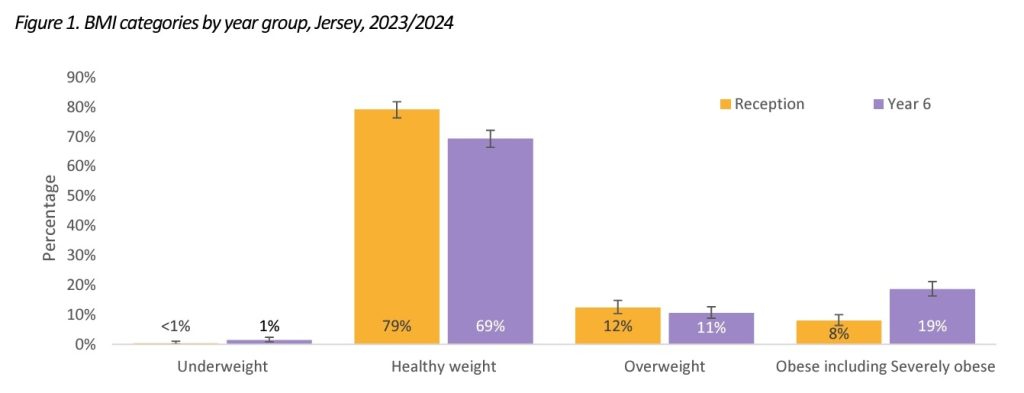OBESITY levels among the Island’s children are plateauing, Public Health figures have revealed.
The latest Child Measurement Report, which regularly analyses the body mass index of children in two different year groups, showed that nearly a fifth of Year 6 pupils (19%) were classified as obese, which is a 1% increase from the previous report published last October.
And the statistic for Reception is identical to the previous figure of 8%.
Martin Knight, head of health improvement, said he recognised there were no changes in trends, a situation which he attributed to the “environment” in which Islanders are living rather than “poor decisions”.

But he went on to reveal that work on the Food and Nutrition Strategy – which was being developed last year in partnership with Cambridge University – had “slowed down”, despite the head of Public Health’s commitment to publish it in 2024.
“With the change in government, strategically we’re focusing on what will have the biggest impact,” he said, explaining the decision to shelve the comprehensive review of the Island’s food system – a complex network of people, farmers, businesses, government, finance, energy and cultures which shapes Islanders’ diets.
According to the latest report, nearly a third of Year 6 pupils (29%) are classified as overweight or obese, a slight reduction from the previous year (32%).
And a fifth of children (20%) in Reception were classified as overweight or obese, another small reduction from one in four (24%).
However, statisticians did note that there was a decrease in the proportion of children classified as overweight or obese from 27% in 2020-2023 to 23% in 2021- 2024, based on a three-year rolling average.
The period from 2020 to 2023 saw the highest levels recorded in more than ten years and aligned with the height of the Covid lockdown.
However, the fall to pre-pandemic levels has not been mirrored among Year 6 students, where the figure has stubbornly remained at 30% when comparing those three-year rolling averages.
Mr Knight, reacting to the figures, said: “These high levels do remain a key concern for the future of our children’s health and wellbeing.
“We consistently hear parents telling us that cost-of-living pressures and lifestyle mean those highly dense and more processed foods, which are unhealthier, are more convenient and accessible.”
He said programmes were taking place in schools to encourage healthy eating at a young age and that the roll-out of free school meals at primary schools had helped to introduce young Islanders to healthier options.
Mr Knight added that he would not “anticipate seeing significant changes” from these efforts yet and acknowledged that “we need to do more”.
Yvonne Corbin, chief executive of Caring Cooks charity, said the organisation was pleased to see some “stabilisation” but that “it is clear that more consistent progress is required”.
She added: “While our programmes at Caring Cooks are making headway in obesity prevention, the statistics emphasise the necessity for increased government support.
“With additional backing, we can further enhance and expand our crucial initiatives, aiming to significantly reduce these rates and improve the health and wellbeing of our community’s children.”






